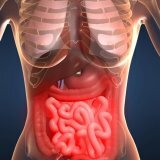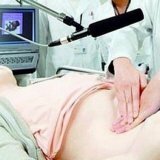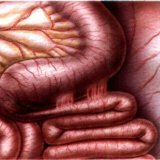Treatment of candidiasis of the intestine

One of the leading places among the infections waiting for us at every corner is candidiasis. Usually, candidiasis manifests itself on the mucous membranes of the digestive organs, and does not depend on the age and sex of the person. It can also be defined as one of the most frequent mycotic infections.
Establishing such a diagnosis can often present significant problems, related, paradoxically, but with insufficient knowledge of many physicians in clinical mycology and difficulties in separating the diagnosis between candidiasis and candidosis.
Our mucous membranes are constantly in contact with the external environment, and are a kind of window in the system of macroorganisms. The infection of candidiasis is everywhere, and its entry into the body is not difficult. So Candida spp, can enter the body through food, water, in contact with the soil, other people. That is why on the planet more than half of people who are potential or obvious candidates are determined.
What is Candidiasis of the intestine.
The first symptom of candidiasis is a disorder, increased gas production and diarrhea. Also in the chair you can find something similar to white flakes. Candidiasis is especially dangerous for young children, since, with such liquid emptying, many useful and necessary substances are washed out of the body. As a result, the child's lag in height and weight can be seen.
It is also necessary to understand that the Candida bacterium is present in every human body, but it is not dangerous while it is there, in small quantities. In a normal healthy person, the onset of candidiasis should be controlled by the immune system and internal microflora.
When, due to some reason, our body can not cope with the function of controlling Candida - they begin to multiply rapidly. As a result, intestinal candidiasis is detected, which requires immediate treatment.
If you do not treat the candidiasis of the intestine, it becomes possible to spread it to the area of the bronchi, urogenital system and oral cavity.
That is, it can be concluded that to prevent the emergence of candidiasis is enough only to take care of their microflora. There are many ways to do this. But, to my great regret, not everything depends on us only. And what if you still do not see, and the disease makes itself felt?
Risk factors.
Before taking on the treatment, it is necessary to know where these Candidaes come from, and what exactly provokes their rapid development, in order to prevent such a mistake in the future.
There are several risk factors, the presence of which can lead to the development of intestinal candidiasis:
- malnutrition, lack of protein and vitamins in the diet;
- weakened immunity. Usually our immunity weakens in stressful situations, during pregnancy, in early childhood and senile age, when other infectious diseases are transferred, and so on;
- resuscitation of resuscitation or intensive care;
- severe diseases, which caused depletion of the body;
- bacterial, protozoal and viral infections of the mucous membranes;
- diseases associated with disorders of the endocrine system;
- treatment with cytostatics, glucocorticosteroids, antibiotics for tumoral and autoimmune diseases, after organ transplantation and with AIDS;
- congenital immunodeficiency.
All these factors contribute to the development of candidiasis in the human body.
Diagnostics of .
The most common method by which it is accepted to diagnose candidiasis of the intestine is bacterial culture of feces. At the same time, the clinical picture of intestinal dyspepsia is necessarily taken into account. Such diagnosis is based on finding more than 1000 cfu / g of candida fungi in the feces, provided that at the same time the decrease in the representatives of normal intestinal flora( lactobacillus, bifidobacteria, E. coli) will be apparent. In this case, the patient is diagnosed with candidiasis of the intestine.
How to get rid of intestinal candidiasis?
Treatment of candidiasis requires compulsory consultation and a doctor who will determine the extent of the lesion and prescribe the appropriate treatment. Usually, for treatment, drugs whose effect is directed to the restoration of intestinal microflora and the prevention of possible risk factors are prescribed. In accordance with the requirements, such preparations do not destroy the normal intestinal microflora, even under the condition of repeated application.
But, there are also folk methods of combating intestinal yeast infection, which can be used if for some reason you can not immediately contact the doctor.
Recipe No.1 .
Start the day with a decoction of chamomile and St. John's wort. This replacement of morning tea or coffee, will help you get rid of the infection. But the broth should be cooked in a certain way, namely: for one liter of boiled water take 30 grams of chamomile and 20 grams of St. John's wort. Pour the plants with boiling water and let it brew throughout the night. In the morning the broth will be ready for use. You need to drink one glass a day. After a while your microflora will recover.
Recipe No.2 .
This recipe also offers you to give up the morning tea, in favor of a decoction, but now oak bark, yarrow and calendula are taken as a basis. The proportions, recommendations for use and preparation remain unchanged.



